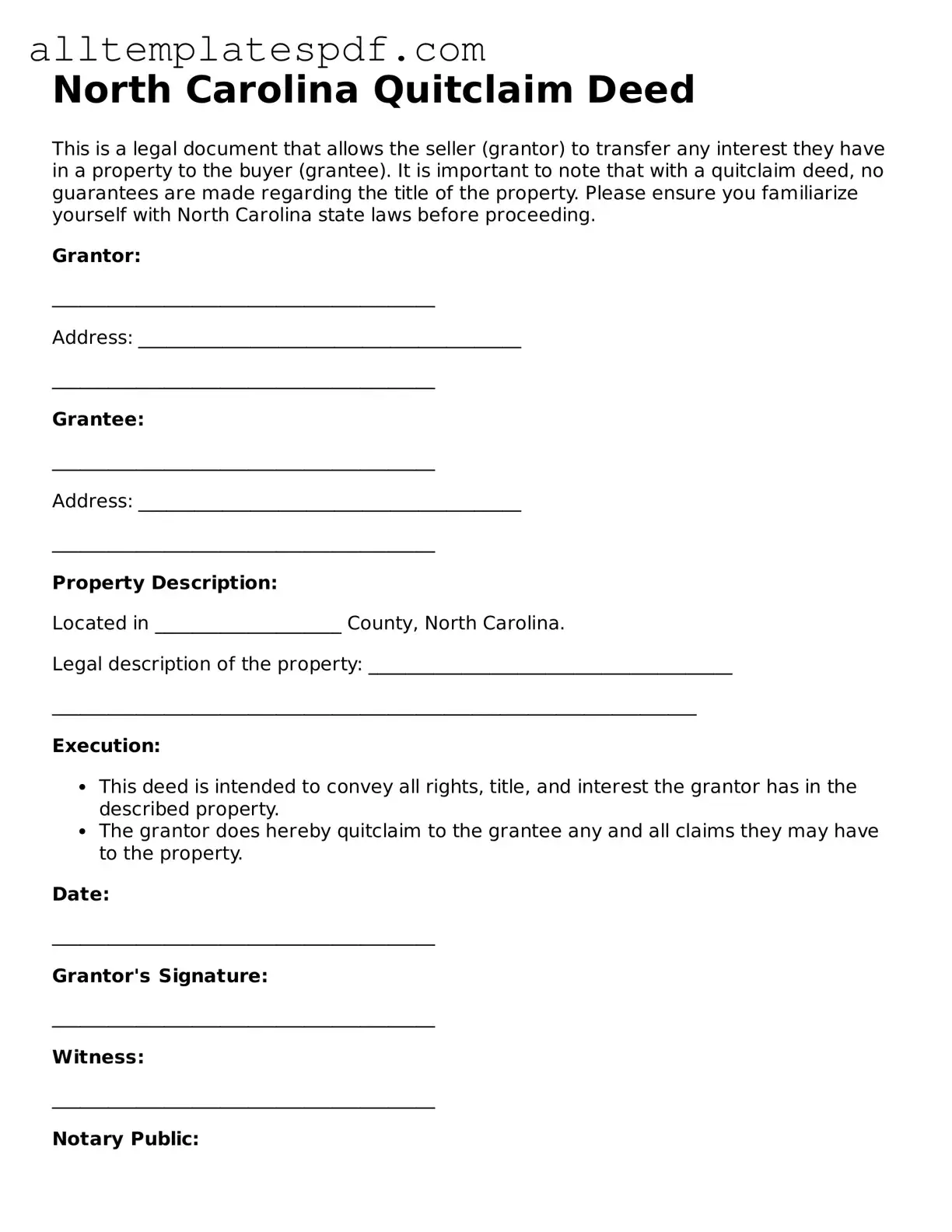Blank Quitclaim Deed Template for the State of North Carolina
A Quitclaim Deed is a legal document used in North Carolina to transfer ownership of real estate from one party to another without guaranteeing that the title is clear. This form serves as a straightforward means to convey property rights, often utilized among family members or in divorce settlements. To get started on your property transfer, fill out the form by clicking the button below.
Open Editor
